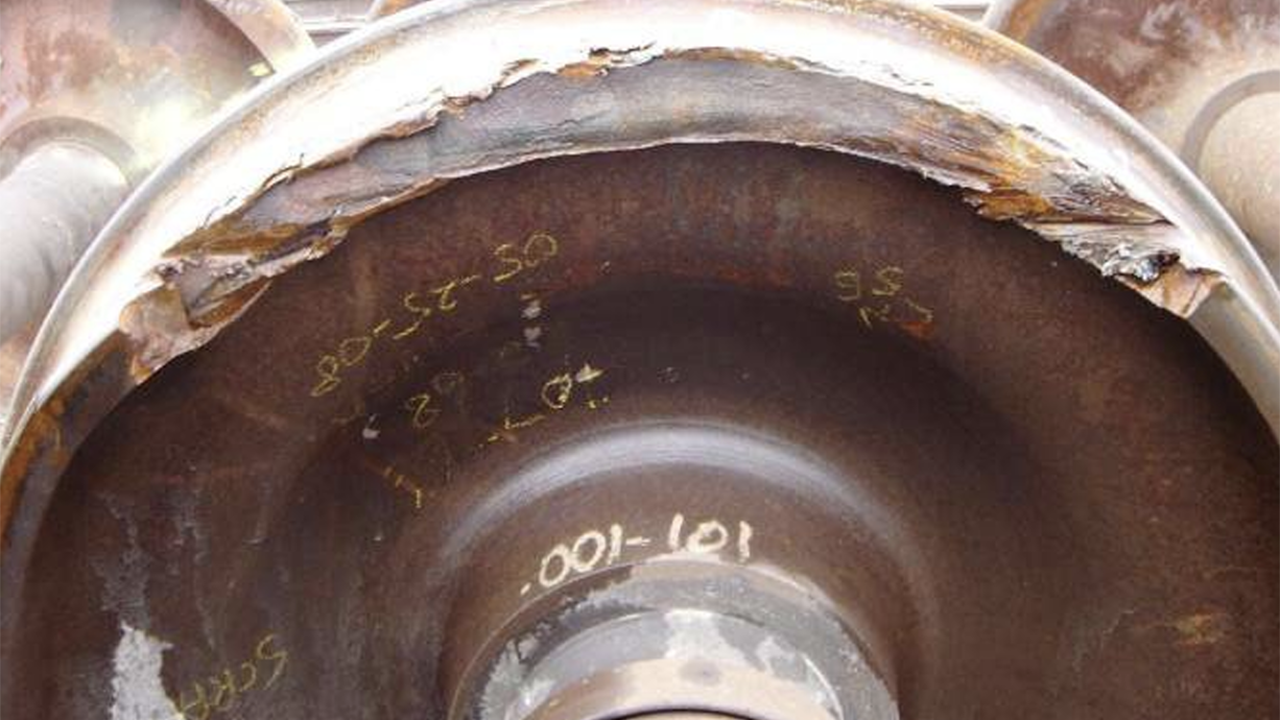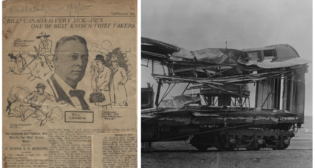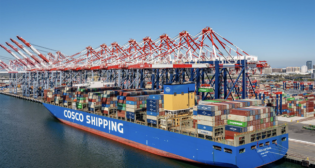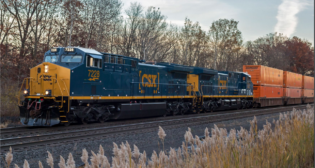
FRA Examines Vertical Split Rim Causes, Prevention
Written by Marybeth Luczak, Executive Editor
(FRA Photograph)
The Federal Railroad Administration (FRA) this month released a technical report on the causes and prevention vertical split rim (VSR), which is related broken wheel rims, one of the leading causes of FRA-reportable wheel-related accidents.
According to FRA, VSR is a “serious railway wheel failure mode,” and “[v]isual clues are not usually present until the crack propagates through the rim.”
VSR wheels, the agency reported, “usually have shells or spalls on the tread surface near the VSR and horizontal cracking or delamination at a depth of approximately 0.25 inch below the tread surface.” They tend to occur more frequently in the winter than the summer, it said, which “may be due in part to an increase in wheel shelling in the winter.” Additionally, axial residual stresses “may play a role in VSR crack propagation once the crack has reached a depth of approximately 0.50 inch below the tread surface,” FRA reported.
To better understand the root causes of VSRs, FRA and the Association of American Railroads (AAR) jointly funded an investigation. They focused on four areas: analyzing VSR rates in freight cars and locomotives; measuring residual stresses in new wheels; performing a Finite Element Analysis (FEA) of wheel stresses due to flaws of varying shapes, orientation and location; and creating a VSR in the laboratory.
According to FRA, the analysis suggested that locomotives have a lower VSR failure rate than freight cars and the difference is suspected to be due to differences in the operating and maintenance environments.
Axial residual stresses were measured in new, as-manufactured wheels from Griffin Wheel Company and Standard Steel. “The wheels had compressive residual stresses close to the tread surface, but were near neutral deeper into the wheel rim,” FRA reported. “The tensile axial residual stresses developed during the manufacturing process have much smaller magnitudes compared to the tensile axial residual stresses developed from cold working of the wheels during revenue service. Large tensile residual stresses can assist in crack propagation, but relatively small tensile residual stresses generated during manufacturing are not likely to be a significant contributor to VSR formation.”
According to FRA, the FEA evaluated the evolution of residual stresses and two fatigue indices in a rolling wheel. The FE model, it said, was three-dimensional and considered wheel-rail friction and work hardening. “The predicted steady-state axial residual tensile stresses agreed well with previously reported values in both magnitude and radial depth,” the agency reported.
“Both the Findley and Fatemi-Socie methods used in the analyses agreed that the critical radial depth for fatigue initiation in wheels is approximately 0.15 inch, considering both contact stress and residual stress,” FRA reported. “This value appears to be relevant, because the median radial depth of VSR crack origins from failed wheels has been reported at approximately 0.17 inch.”
To better understand the parameters that cause VSRs, “a wheel with a slit machined into it was tested on a rolling load machine to cause the crack to propagate,” FRA reported. “With an initial load of 36 kips, increased at intervals to 50 kips, the test ran for 1.88 million cycles. No crack propagation was detected using ultrasonic methods. The test/research was then terminated to re-evaluate the possible mechanisms of VSR formation. Possible reasons for the lack of crack propagation were considered, but the exact mechanisms of VSR formation and propagation are still unknown at this time.”



